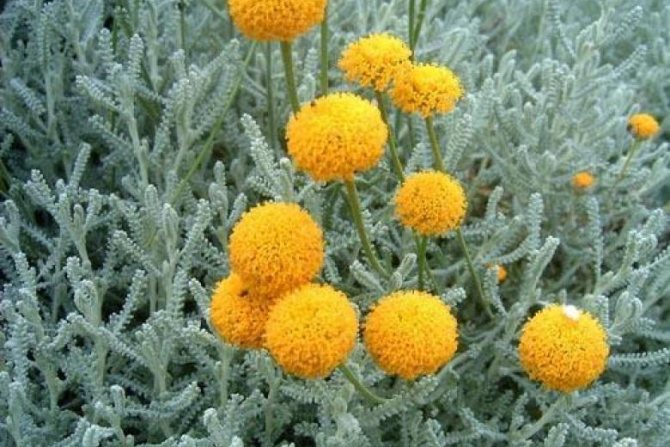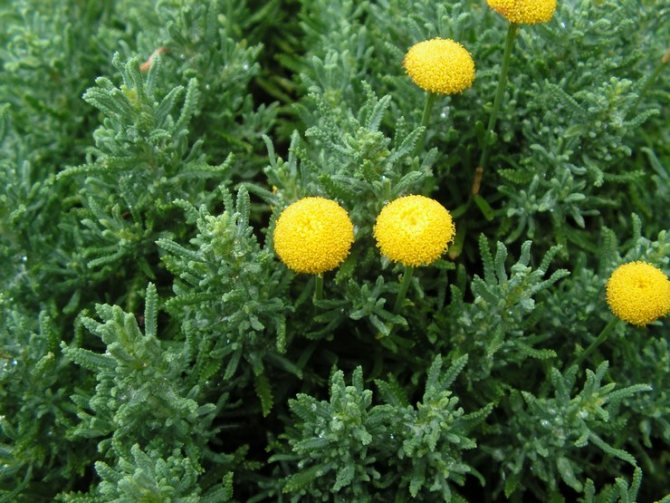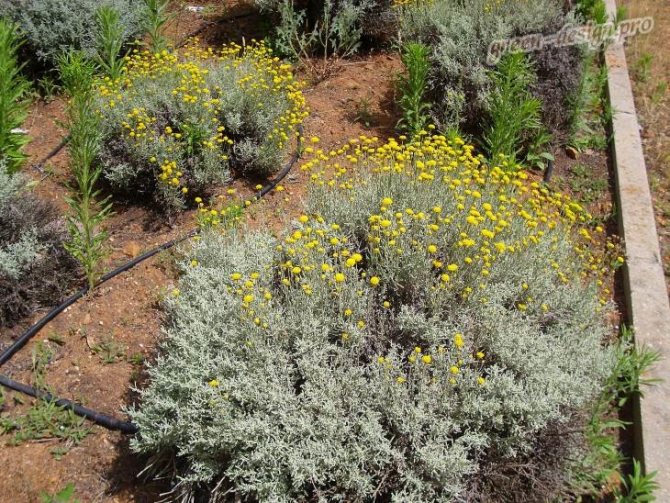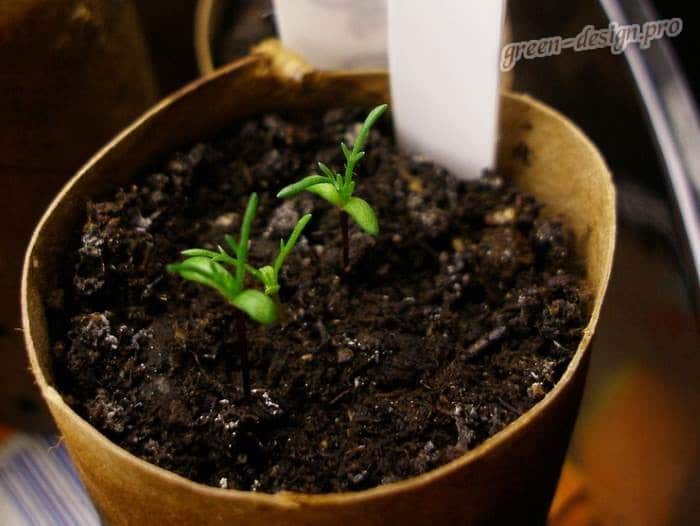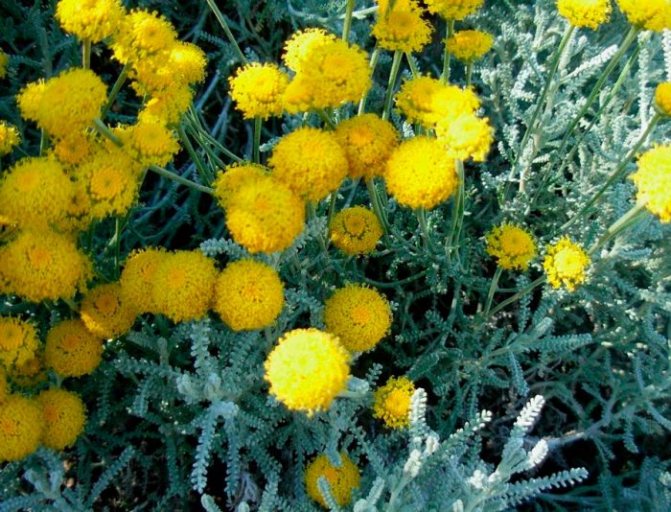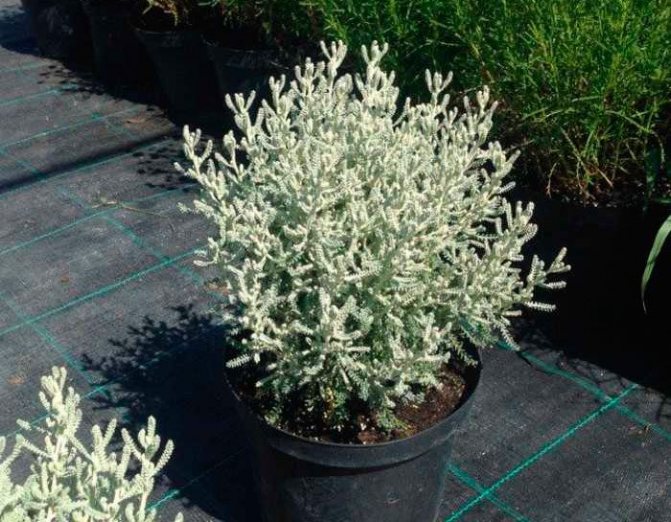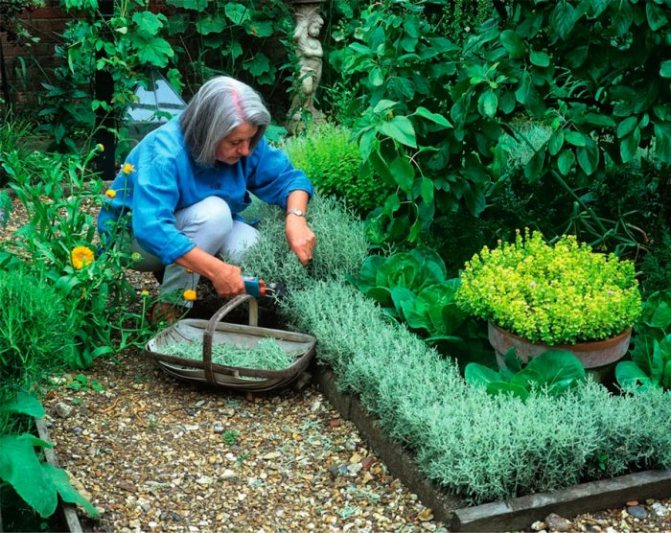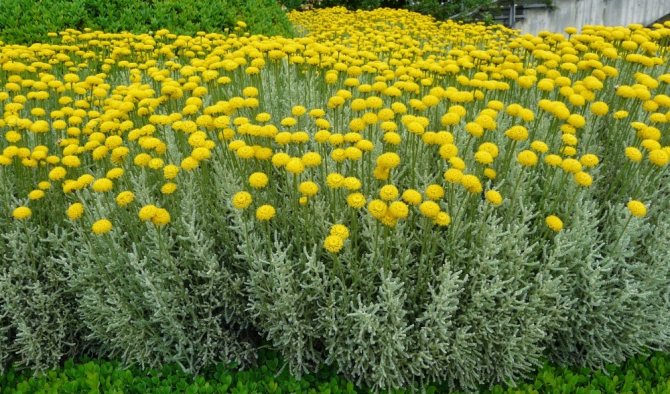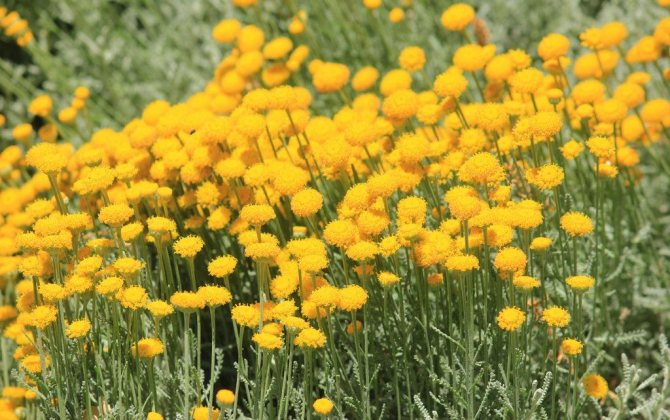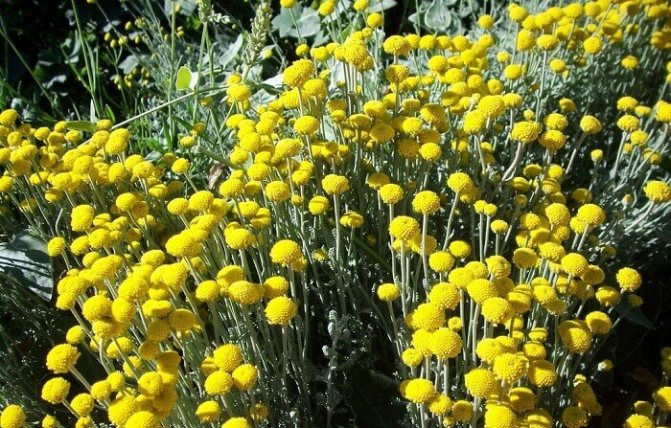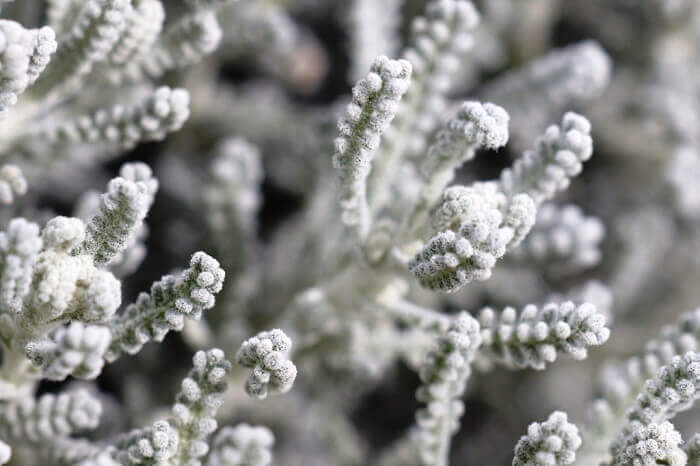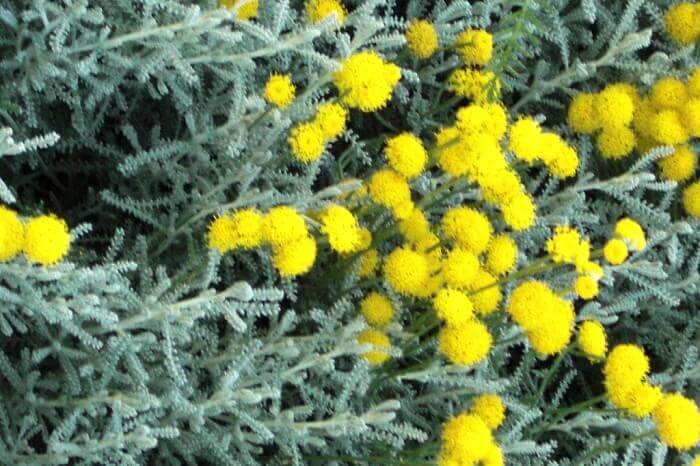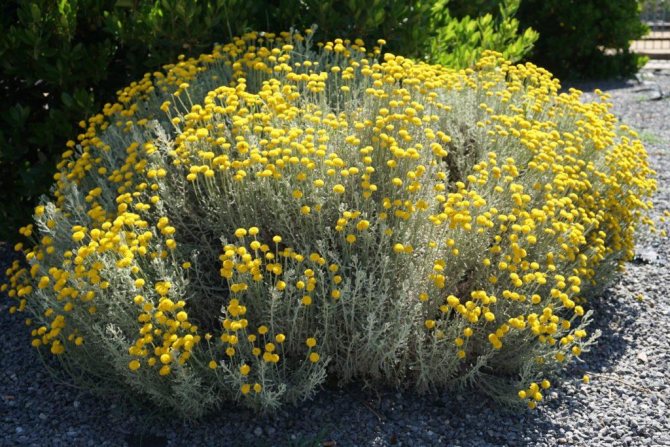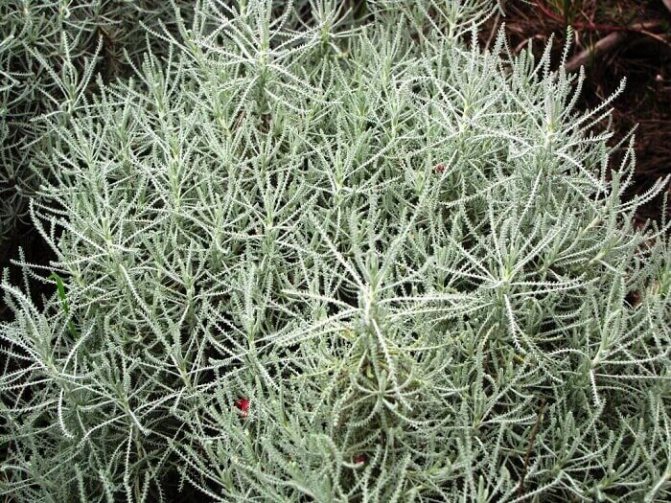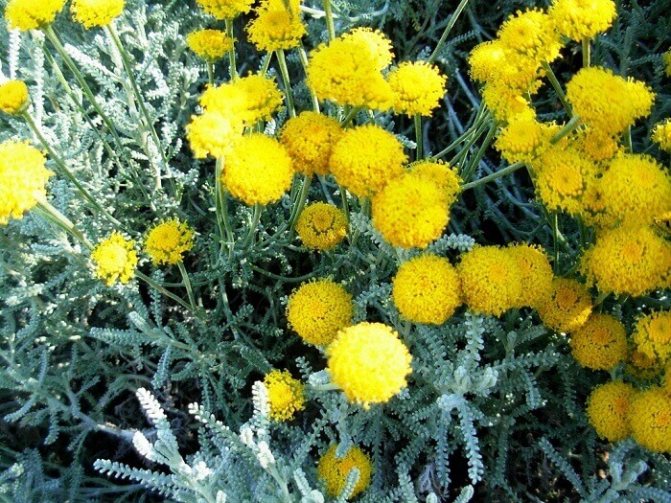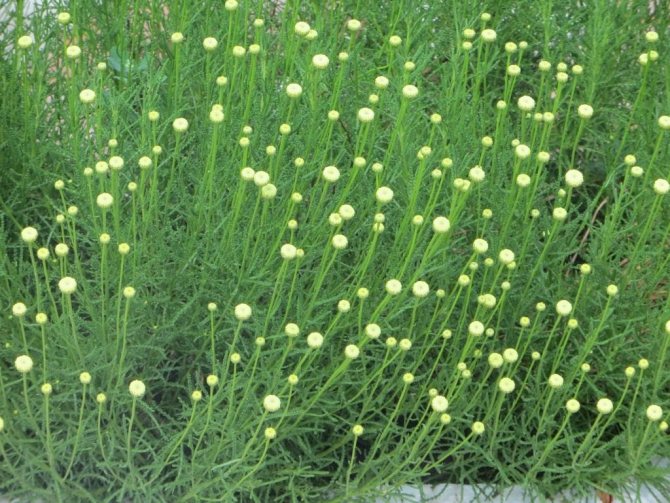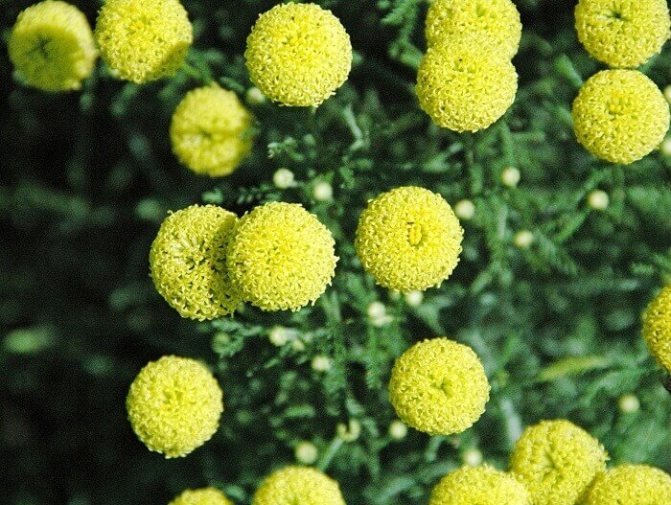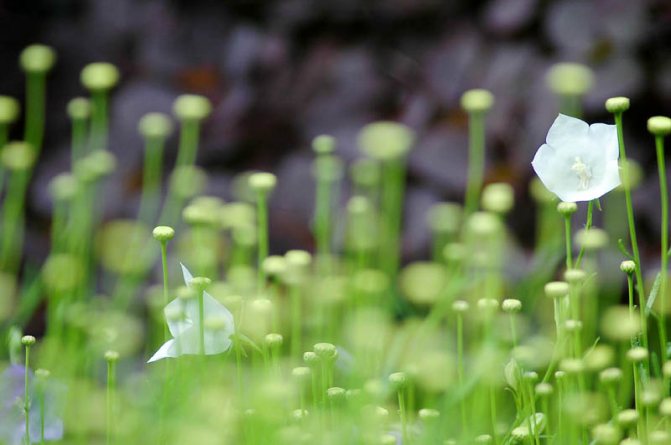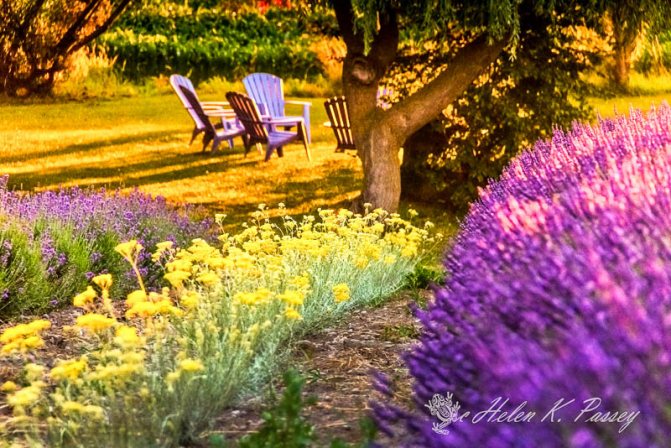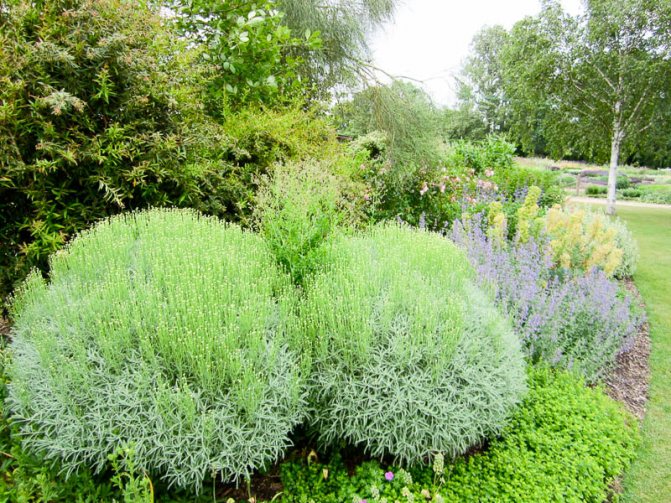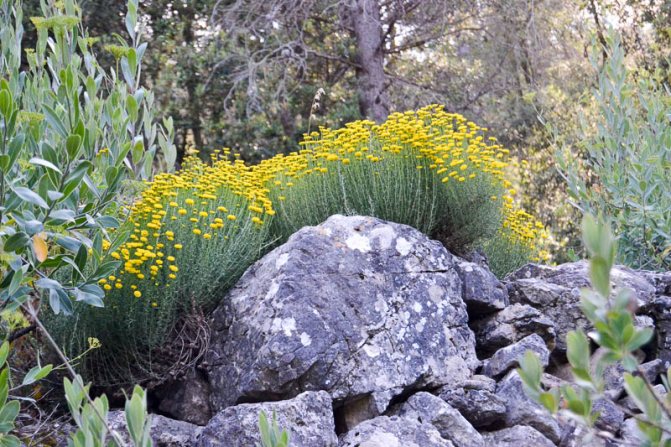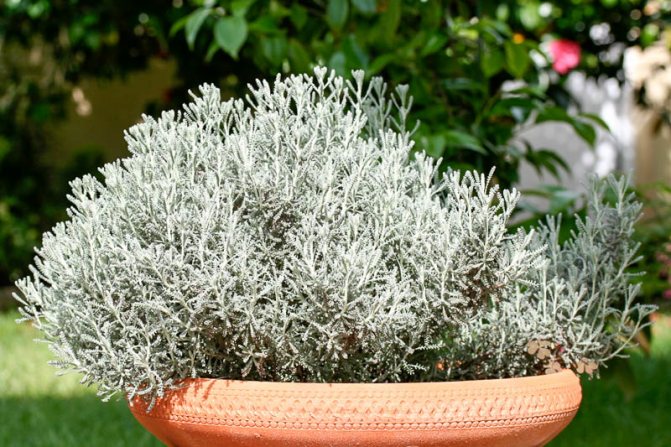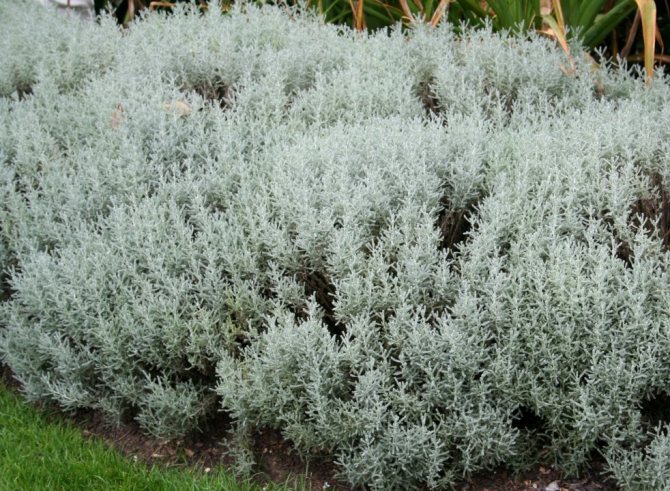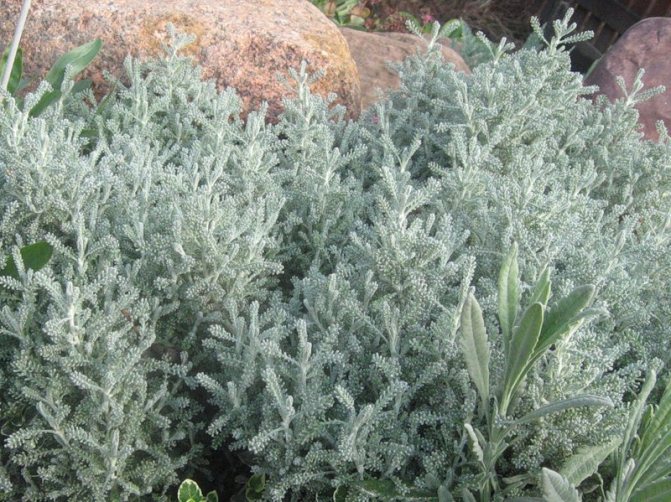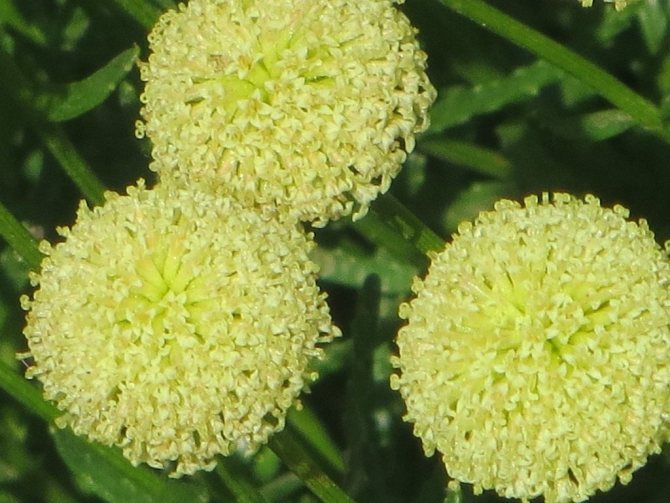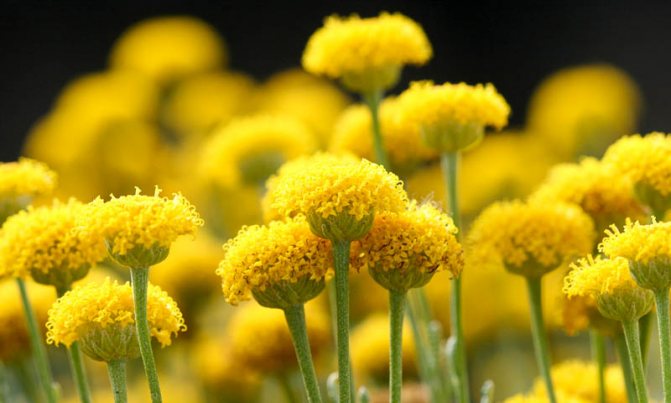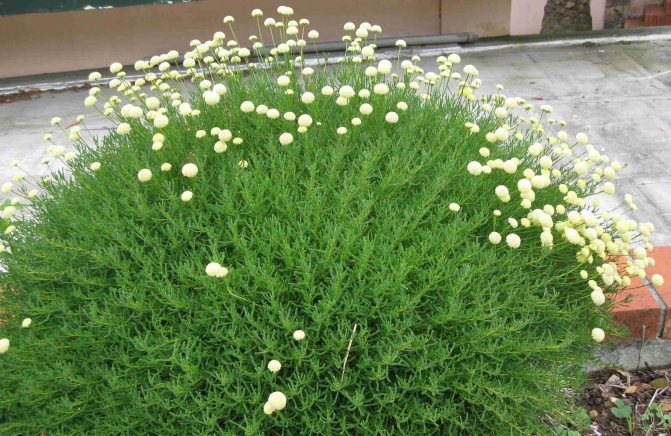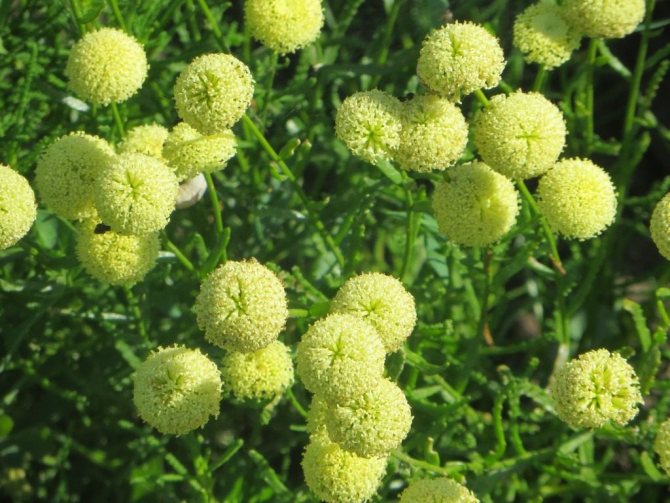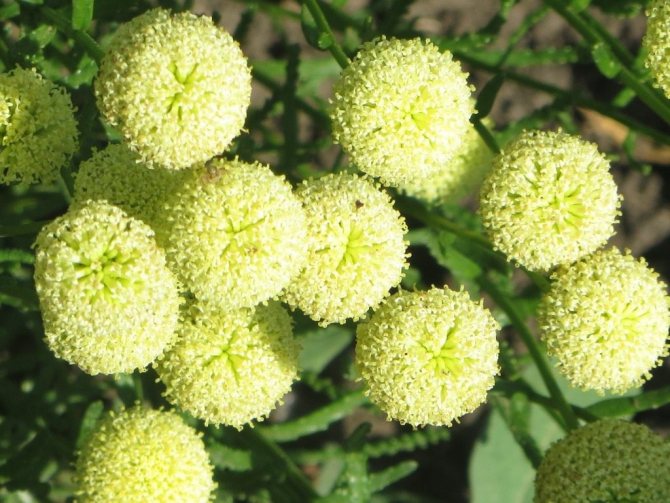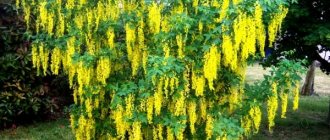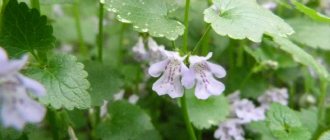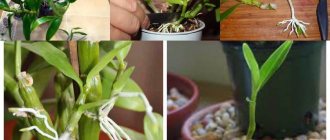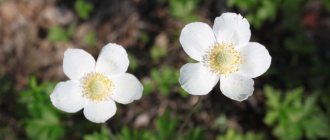A short summer flowering shrub grown in southern gardens for its decorative balsamic foliage and pretty yellow button-like flowers. Santolins work well for spacious rock gardens, foreground flower borders, and low hedges. All the species and varieties described below form small inflorescences about 2 cm in diameter, sitting singly on long stems.
Santolins can withstand frosts down to -17 ° C (sometimes lower), so they can be successfully grown only in the southern regions of Russia. Winter shelter is undesirable, since under it santolins are often vyput.
These are relatively short-lived perennials, which must be transplanted to a new place every 5-10 years. The descriptions show the sizes of 5-year-old plants.
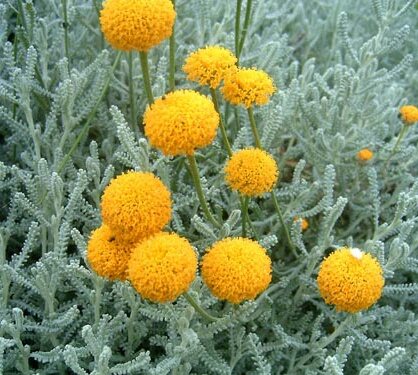
Santolina
Caring for Santolina in the garden
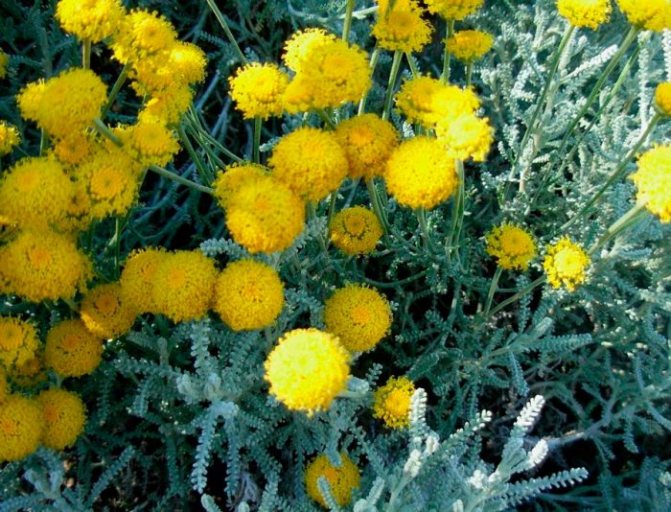

Growing santolina in your garden is easy enough. To do this, the bushes must be provided with timely moderate watering, loosening the surface of the earth near the plants, removing weeds, feeding, picking off wilted inflorescences, and also preparing the plants for winter in time.
How to water and feed
Watering should be systematic and moderate. This plant is highly drought tolerant. If it rains regularly in the summer, then the bushes can do without watering. However, during a prolonged dry period, they will need systematic watering. If the stems of this plant turn yellow in the middle of the summer period, then this is the fault of stagnant moisture in the root system. To fix this, you need to leave the flowers un-watering for a while. It should also be borne in mind that watering should be done only when the top layer of the earth dries out well.
Top dressing of santolina is carried out during intensive growth 1 time in 7 days. The application of a solution of mineral fertilizers with a small amount of nitrogen begins in spring after the intensive growth of the bushes begins. In August, you need to stop fertilizing the soil. The nutrient solution should be very low in concentration, since the presence of a large amount of nutrients in the soil has an extremely negative effect on flowering.
How to propagate and transplant
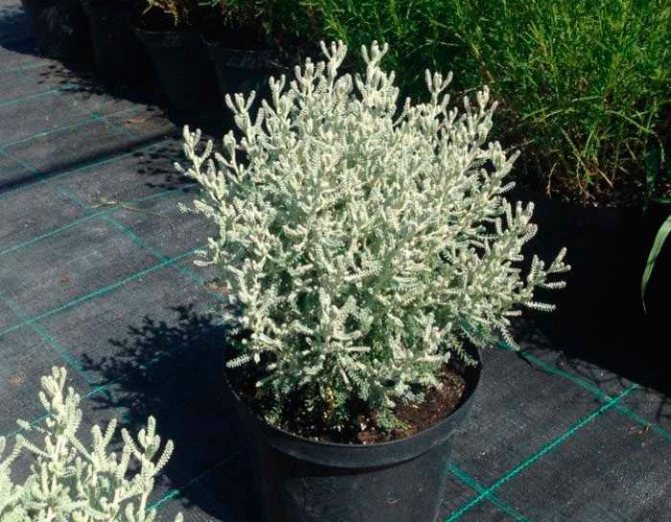

If you grow santolina in the same place without transplants, then its degeneration begins. In this regard, transplanting bushes is required every 5 or 6 years in the spring. During transplantation, the division of the bush should also be carried out.
The bushes should be removed from the ground and divided into parts, while it should be borne in mind that on each division there should be stems and part of the rhizome. Places of cuts should be sprinkled with crushed charcoal. Delenki are planted in planting holes, which should be prepared in advance. They are buried in the soil up to the point where the branching of the stem begins. In the autumn, it is recommended to huddle the bushes high, due to this, by the time of transplantation, young branches are formed at the bush.
You can also propagate such a culture by cuttings. They are harvested in March, for this you need to cut off the shoots of this year from the bush. Places of cuts are dipped in a solution of an agent that stimulates the formation of roots, after which the cuttings are planted in sand, and covered with a film on top.After the growth of young leaf plates begins on the cuttings, they will need to be seated in individual containers. Until June, they should grow up and get stronger, after which they are planted in a permanent place.
Wintering
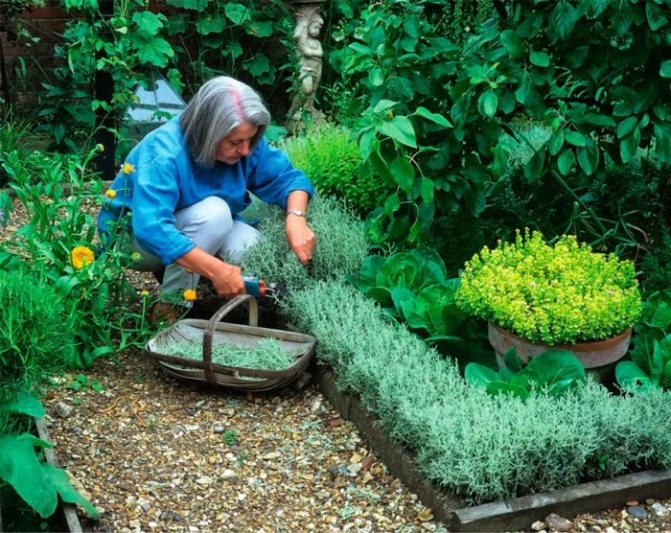

When the plant finishes blooming in August, the stems will need to be shortened by 2/3 of the length. Thanks to this, the shape of the bush will remain neat, and it will not fall apart. When growing this culture as an ornamental deciduous or spicy plant, its inflorescences must be cut off before they wither. Santolina has a low resistance to frost and when grown in mid-latitudes in frosty winters can die. To avoid this, the bushes must be covered. To do this, they must be covered with a large wooden box on top, which is covered with spunbond, roofing felt, lutrasil or film. The covering material must be fixed with something heavy, for example, bricks, otherwise it can be carried away by the wind. However, before putting the box, the surface of the ground near the bush is covered with a layer of pine needles, spruce branches or sand mixed with wood ash. In spring, the shelter must be removed, and after the snow cover melts, the surface of the site is covered with compost mulch. Some gardeners remove santolin from the ground for the winter and plant it in a pot, which is placed in a cool room. In the spring, she is again planted in the garden.
Diseases and pests
Santolina has a very high resistance to diseases and pests. However, if stagnant water is observed in the soil, this will cause rot on the root system. In the case when the shoots turn yellow ahead of time, you can be sure that this is due to the stagnation of water in the soil. The bushes need to be shed with a solution of a fungicidal preparation, then they are not watered for a while. After a while, the plants will become beautiful and healthy again.
If the bushes grow in a shaded place, then this can also cause problems with them. Despite the fact that this crop is drought tolerant, it still needs to be systematically moistened, otherwise it may die in dry soil.
Diseases and pests of Santolina
Santolina is highly resistant to all pests and diseases. Problems with her health can arise only with improper care and maintenance.
For example, with an excess and stagnation of moisture in the soil, rotting of the root system begins. Signs of the disease are shoots that turn yellow in the middle of the summer season. Excess watering should be stopped immediately and returned to normal over time. The shrub must be treated with a fungicide and the culture must be left without moisture for a while. With timely rescue measures, the flowers will surely restore their attractiveness, the disease will recede.
Santolin can lose its decorative effect with the wrong choice of the place of cultivation. Shady conditions, lack of sun and light, too dry soil - all this can cause the death of the plant. If the shrub is transplanted in time to a place more comfortable for it, health problems will stop.
Planting santolina seedlings
Badan hybrid Edens Dark Margin photo, description use in design
Planting and care in the open field begins with choosing a place on the site. Since this is a light-loving plant, the place should be as open as possible to the sun's rays. With a lack of light, the bushes will begin to stretch and lose their decorative effect. The soil at the planting site should be well-drained and loose.
Too fertile soil is not needed for this plant, as it will grow strongly, but will not bloom. Santolina is best suited for rocky or sandy soil. Planting should be done in late spring or early summer when the weather is completely warm. In the southern regions, planting can be done in the fall.The selected place on the site is carefully dug up and sand is added.
For each seedling, holes are dug about 30 cm deep. If there are several plantings, then a distance of 50 cm is maintained between them. A drainage layer of broken brick or crushed stone is poured at the bottom of each hole.
Plant care
Caring for Santolina is quite simple and does not cost much. But some activities should be carried out. These include:
- watering;
- top dressing;
- pruning;
- preparation for winter.
Gardeners water this plant abundantly only after planting, and then switch to moderate watering. The shrub tolerates short-term drought well, so there will be enough rainwater. After watering and rain, it is necessary to loosen the soil around each bush. It is enough to carry out top dressing once a month using mineral fertilizers that do not contain nitrogen. From its excess, flowering stops. The plant is pruned twice a season.
In the spring, dried and frozen parts of the shrub are removed, at the same time shaping it. In the fall, overgrown branches are shortened. The trimmed pieces can be used to grow new bushes. The preparation of the plant for the winter period is also of great importance. To prevent the plants from freezing in winter, they are covered with straw, spruce branches or dry foliage. When snow falls, it can also be added to plantings.
Diseases and pests
With insufficient or improper care during the growing process, the plant may have some problems. With excessive watering, root decay occurs, and with insufficient watering, their drying out. With a lack of phosphorus and potassium, antaracnosis may occur. If you find any problems with the plant, you should make the necessary adjustments to the care. And also the bushes are treated with preparations containing copper.
These include: Fitoverm, Oxykhom, Fundazol, etc. Among pests, spider mites and aphids can be of concern to the plant.
... When they appear, the bushes are treated with insecticides. The most dangerous pest of santolina is ground beetle. Its larvae live in the soil and feed on the roots of the plant. Gardeners use Prestige against this pest.
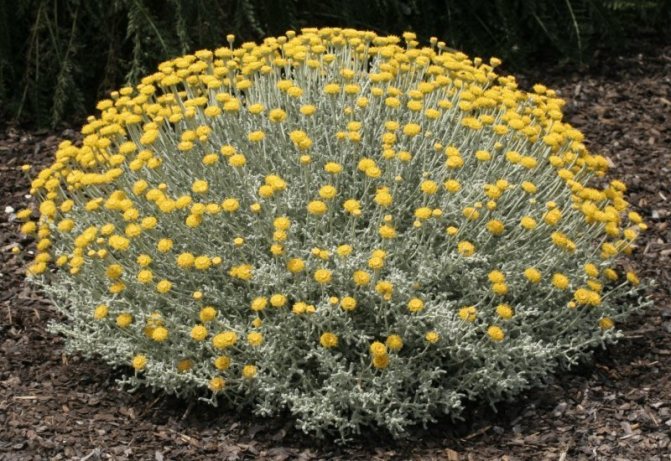

One of the perennials that moved to our region from the Mediterranean region is the Compositae of Santolina. Many decorative varieties are known, the main ones of which we will talk about today.
To date, five species of Santolina are known, each of which demonstrates its own growing conditions, structural features and flowering.
1. Cypress santilina can be ranked among the most popular among other varieties, can reach a height of up to half a meter. Arcuate branches with fragrant light green leaves, which eventually change their color to silver. The flowering period begins in June and lasts all summer. The flowers deplete an incredible wondrous scent and are yellow in color.
2. Sinatolina Cirrus of the same size as the previous species. The leaves are quite narrow, but the flowers are painted in pale white and resemble a basket in shape.
3. Santolina Greenish got its name from the rich green foliage, but the petals have a delicate creamy color and small size.
4. Santolina Neapolitan can grow up to one meter and show light green leaves and yellow flowers during the flowering period. In this case, there is a dwarf form that does not rise above sixteen centimeters.
5. The name Graceful Santolina was given for a reason - a beautiful heat-loving flower that cannot withstand winter frosts in the open air.
Diseases, pests and methods of protection
Pests rarely attack Santolina. The main problem is fungal infections that occur against a background of high humidity and temperature changes. To prevent the plants from getting sick, it is necessary to prevent waterlogging of the soil.If this does happen, the crown is treated with copper-containing fungicides ("Hom", "Fitoverm", "Fundazol").
Aphids and spider mites can migrate from other plants in the garden to Santolin. You can fight them with soapy water or insecticides (Aktara, Iskra).
Santolina from seed
WE PLANT A GARDENEverything you wanted to know about do-it-yourself landscape design
Reproduction of santolina can be carried out using seeds, cuttings and dividing the bush, which was mentioned above.
Seeds can be sown directly into the soil - the main thing is that it warms up enough, so usually sowing is carried out not earlier than June.
To obtain seedlings, seeds are sown at the end of winter. First, it is necessary to stratify (keep in a cold place, for example, a refrigerator) the material for a month. After sowing, the pots are kept in a warm room with good lighting.
Seedlings usually appear in 15-20 days. From time to time, the soil is sprayed with water. When the sprouts have a pair of true leaves, they are dived into separate containers. Young plants are planted in the garden in early summer.
to the table of contents
Growing video from the practice
Santolina is a perennial Mediterranean shrub reaching a maximum height of 60 cm. They have very beautiful leaves with a spicy scent reminiscent of wormwood. And the shoots themselves, with openwork and small leaves of a silvery-green color, resemble cypress. They bloom only in mild climates; at the beginning of summer, yellow, brightly smelling, single flowers, similar to small baskets, appear. These plants love sunlight and are afraid of shade and waterlogging. Growing is within the power of even inexperienced gardeners. In the conditions of the middle lane, ornamental plants in winter are best stored in a cool room.
Types of Santolina
All you wanted to know about DIY landscaping about a flower with an affectionate name
Most often in the gardens there is cypress and greenish or green-leaved santolina.
Cypress Santolina (Santolina chamaecyparissus) forms a dense bush of 40-70 cm with small openwork leaves of a silvery-green color. Inflorescences appear in mid-summer on a long peduncle. They are small, spherical, yellow in color. The flowers and leaves contain an essential oil with a pleasantly spicy aroma reminiscent of wormwood.
Santolina virens is distinguished by its bright green foliage, which darkens by the end of summer. Its leaves are narrow, dense. Branched shoots. With the help of regular pruning, it is not difficult to form spherical bushes from it. Blooms in July-August, flowers are yellowish-cream. After flowering, the bush often loses its decorative effect, so many gardeners cut the peduncles.
There are also many hybrids, sometimes the classification of santolin is difficult.
Plant care
Taking care of these outdoor perennials is easy. For santolina it is enough:
- moderate watering;
- periodic loosening of the soil;
- regularly getting rid of weeds by weeding;
- shelters of leaves or spruce branches before wintering.
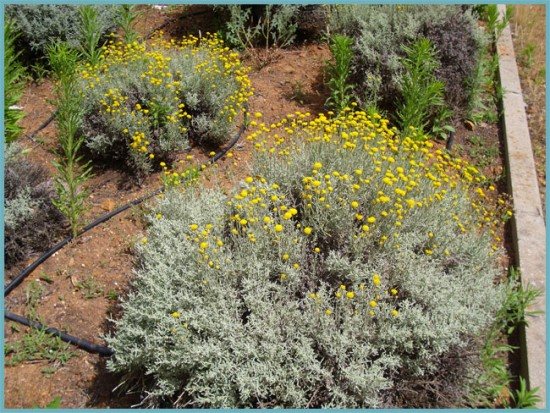

If you grow santolina in a room, then take it out to the balcony, veranda or garden in the summer, replant it annually. As for the water procedures for santolina, it should be clarified - during the growing season, it has a great need for them, but it should be watered only when the soil dries up. Excess moisture is indicated by yellowing of the shoots. To prevent them from starting to rot, stop watering the plantings immediately.
Attention! When the flowering ends, the shoots are shortened by two-thirds to keep the bush compact.
Planting Santolina in open ground and care
The location for growing Santolina must be chosen in such a way that it is bright and sunny. In good light, the Santolina bush will grow rapidly, it will become lush, bloom profusely, and the foliage will acquire a beautiful silvery color.If the bush is planted in the shade, then the shoots will be thin, they will begin to stretch upward, and flowering will be rare. The aroma will also be noticeably reduced.
Since Santolina grows in the wild in poor soil, it also needs to be provided with the same condition in the garden. The fact is that if you plant Santolina on nutritious soil, then the bush may not bloom.
The best option is rocky soil or sandstone with neutral acidity.
It is important that the site has good drainage. The plant should not be planted in a lowland, as well as in an area where groundwater is close to the surface.
Watering Santolina is necessary if the soil is dry. The fact that the plant needs watering can be guessed by the decrease in the elasticity of the leaves. If you overdo it with watering, then rot may appear, the branches will begin to turn yellow quickly.
Like any ornamental plant, Santolina takes top dressing well. They must be carried out in the spring and summer once a month. Complex mineral fertilizers with a low nitrogen content are recommended.
The Santolina bush needs pruning. It is recommended to carry it out at the end of August, when flowering ends. The bush is cut to 2/3 of the length of the shoots - this will prevent the branches from decaying with strong growth. It is also necessary to remove withered, dry inflorescences.
If perennial Santolina is grown on the site, then in the spring it is necessary to carry out sanitary pruning: damaged, dry, diseased branches will be removed. Once every three years, it is necessary to rejuvenate the bush - cutting off all stiff shoots.
Santolina has been growing in one place for 5 years, after which it must be transplanted to a new site, dividing it into bushes. Delenki should have at least a small piece of rhizome.
The plots are planted to a sufficient depth, up to the point where the stem begins to branch. The bushes that remain after dividing can be buried in light soil and slightly moistened - over time, roots will also appear on such cuttings.


Decoration of gardens and premises with Santolina shrubs
If the transplantation of the bushes is planned for the spring, then in the fall the plant must be hilled - this will allow the rhizome to "release" new branches.
In order for the plant to withstand the winter cold, you should take care of its shelter in the fall. It is recommended to cover the bush with dry foliage or straw, and when it snows, sprinkle it on it, making a snow mound. This procedure applies to gardeners living in regions with a temperate climate. In the south, no cover is required for Santolina.
In the spring, the bush is gradually released, otherwise the flowers may rebuke. After the snow melts, the site is mulched.
As for diseases and pests, then with proper plant care, Santolina is quite resistant to them. However, it must be remembered that if the plant does not receive moisture for a long time, then it can not only wither, but also spider mites and aphids can appear in it. The leaves of Santolina begin to curl up, dry out, and to prevent this plant, it should be sprayed with a solution consisting of soapy water, a light infusion of garlic or onion peels, or resort to chemicals.
If Santolina does not receive the required amount of phosphorus and potassium, and the soil is very waterlogged, then anthracnose may appear - brown spots on the stems, leaves, wilting of the whole plant. In this case, it is necessary to quickly remove the affected parts, and the plant itself should be treated with a fungicide solution.
Step-by-step instructions for propagation by seeds and cuttings
When a shrub is propagated by seeds, the seedling method is used. Frost-resistant species are planted in the ground so that a powerful root system has time to form by winter.
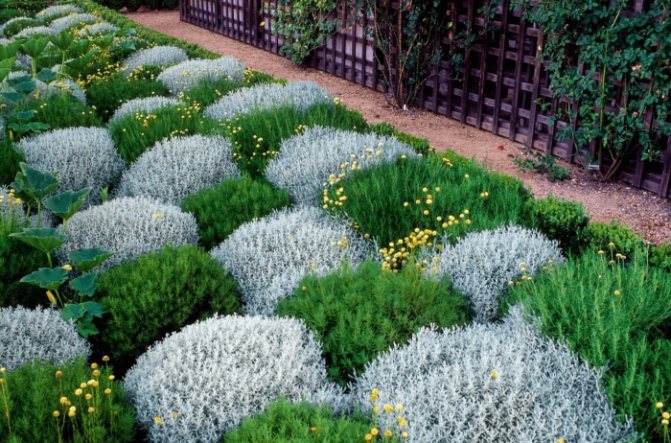

Planting shrubs in a checkerboard pattern is a good design solution
Sowing seeds in a permanent open place is carried out in early summer, when the soil is well warmed up. And they are sown for seedlings at the end of winter. Before sowing, the seeds are stratified in the refrigerator, keeping them in a damp cloth for a month. The sowing process is carried out in the following sequence:
- Finished seeds are placed in wide and shallow containers filled with equal parts of turf and sand. The seeds are deepened into the ground by a couple of centimeters, and the containers with them are placed in a bright and warm place, where the temperature is 18–20 degrees.
- In such conditions, sprouts appear in 2-3 weeks.
- When 2-3 true leaves are formed, the seedlings dive into separate pots, and they are transplanted to a permanent place in late spring - early summer.
Read also Powder closet in the country with your own hands
When rooting cuttings, the following rules are observed:
- Only green shoots of the current year are suitable for reproduction, lignified cuttings of the root system do not form. The length of the cuttings is 8–15 cm. Cutting is practiced in late winter or early spring.
- Young twigs are cut with the part of the trunk on which they grow.
- They are treated with the stimulant Kornevin.
- Then they are planted in a mixture of sand and leafy earth in proportions of 2 to 1.
- Cover with a transparent container, raised daily for ventilation.
- They are watered regularly, avoiding flooding.
- Rooted plants in groups of three are planted in individual pots. At the same time, for their better branching, pinch the crown.
- They are transplanted to a permanent place in June.
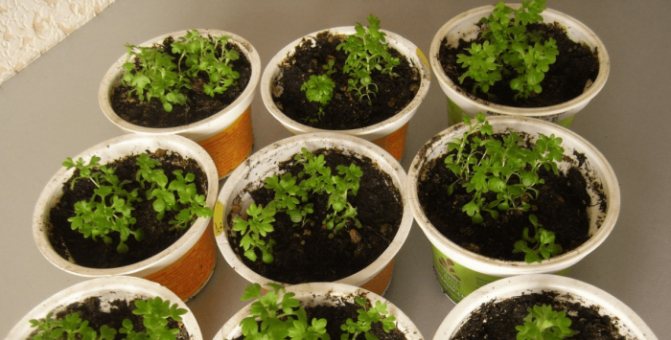

From the pot you have to plant bushes in the garden
When planting seedlings in spring, the soil is dug to the depth of a shovel bayonet. Sand is added to heavy soil. Landing is carried out as follows:
- The earth is dug to a depth of a third of a meter.
- A Mediterranean guest is removed from the pot, spreading the roots, and placed in trenches, observing the interval between neighbors of 10-30 cm, and for tall species - half as often.
- They are covered with soil, then compacted in the root circle and watered abundantly for 3-4 days.
- Watering is reduced after the seedlings are rooting.
Reproduction methods
Seeds can be sown in open ground already in the established warm weather, and if we are talking about a room or a greenhouse, then in spring. As a rule, sprouts will appear after three weeks and do not require special care.
For cuttings, an already adult plant is required, from which shoots are cut, the length of which can be from eight to fifteen centimeters. You need to cut it in late winter or early spring, and then place the cutting in a container with wet sand and leafy soil. The planting must be covered, and the rooted cuttings are then planted in groups of three. Can be planted outdoors only in June.
Santolina is great for pot cultivation as a beautiful decor on balconies and terraces.
The role of the plant in landscape design, options for use
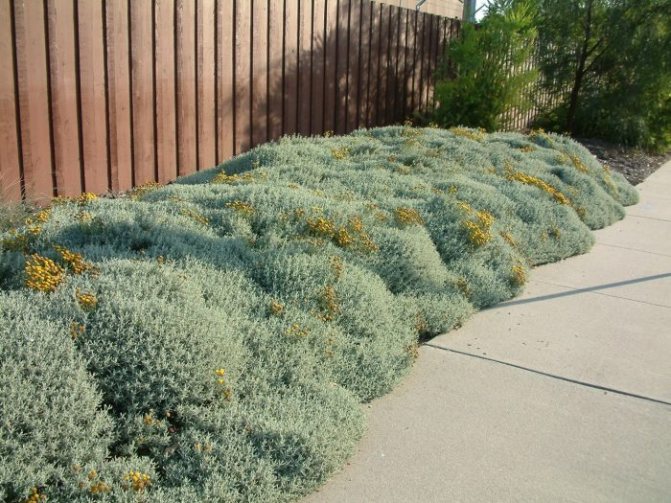

Small bushes look unusual and versatile in combination with other plants
Perennial is widely used in garden design, there are several options for its successful application:
- In the foreground of the flower beds, like a low hedge.
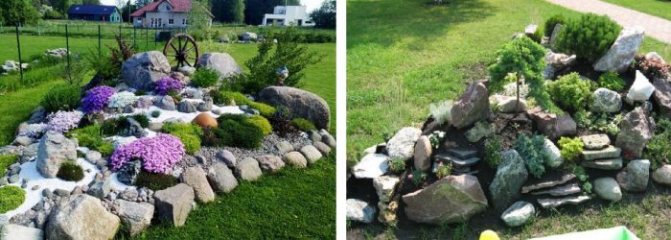

Santolina will help to carry out the correct zoning of the alpine slide
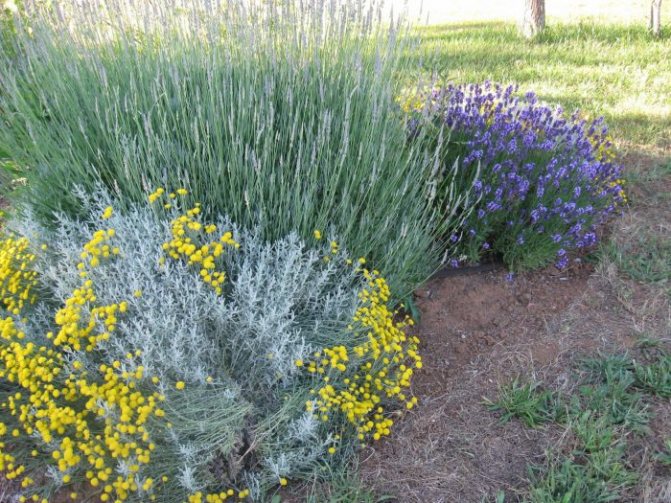

Santolina combined with nana lavender and dutch lavender
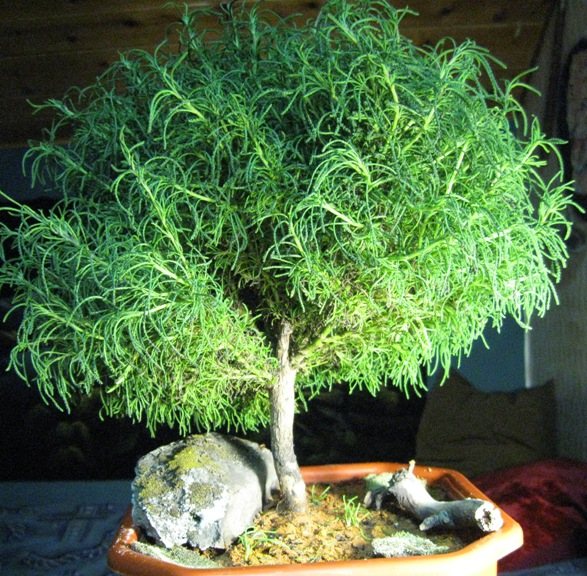

Such trees can be taken out on the terrace in summer.
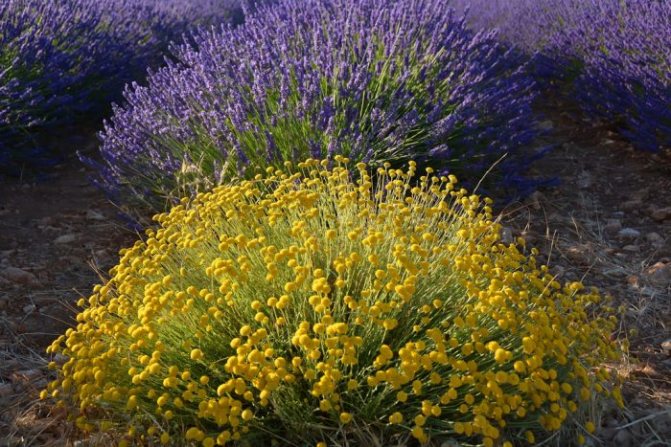

Santolina in combination with lavender looks great both in flowerpots and outdoors
Growing and caring for santolina
Subject to all the rules of planting and growing conditions, it must be remembered that santolina very rarely lends itself to disease-causing lesions and pests. But sometimes it happens that a spider mite or aphid attacks the bush.
In these cases, it is recommended to treat the plant with fungicidal preparations.
The most dangerous pest is ground beetle, therefore, from the first day, as the first beetle begins to fly, it is recommended to treat the root collar and trunk with Prestige.
The main problem in growing is the wrong climatic conditions, as well as the inappropriate area where the flower will grow.
Poor stony or sandy loam soils are suitable for santolina. Of course, the land on our plots does not always meet the various requirements of various plants, so any well-drained and permeable soil is suitable for growing santolina.
In the first year of growing santolina, you will need weeding, watering, although not frequent, because santolina is a drought-resistant plant.
Care in subsequent years: In the spring, santolina bushes are planted in open ground, the soil under the bush can be sprinkled with humus so that the soil under the bush remains soft and moderately moist. Every spring, the crown of the bush is examined, if necessary, sanitary pruning is carried out, removing all old, diseased shoots.
During the budding and flowering period of santolina, fertilizing with mineral fertilizers can be carried out once a month.
In August, after flowering, it is recommended to cut off the shoots of santolina by 2/3 of the length of the shoot so that they do not disintegrate and the bush keeps its shape. By the way, if you want to keep the shape of the santolina bush, then the inflorescences can be cut off immediately, without waiting for the end of flowering, because santolina can be grown as a spicy and decorative leafy plant, and not only as a flowering plant. Once every 5-6 years, the santolina bush is divided.
Subsequently, santolina can be propagated by cuttings. For cuttings, you need to use green shoots of the current year, which are easily rooted in the open field. The use of a rooting stimulant has a beneficial effect on rooting.
Winter shelter. In places with warm winters above the santolina bushes, it is enough to build a light shelter from spruce branches. In areas with cold winters, you should not risk it: you need to dig up the santolina and bring it into the house. Do not forget that santolina is an evergreen plant that will delight you even in winter.
Santolina can be problematic when grown in the shade. And no matter how drought-resistant the plant is, it needs regular moisture, and in dry soil without watering, the plant eventually dies.
Features of care after planting
Caring for Santolina in the garden consists of the following activities.
Watering
Stagnation of moisture is very harmful to the plant and leads to the development of rot, therefore it is watered sparingly. During the period of active vegetation and flowering, watering is carried out only after the topsoil has dried out. Water for irrigation should be warm and settled. It is recommended to loosen the soil after watering. This procedure not only prevents weeds, but also improves oxygen access to the roots.
Top dressing
Santolina is also fed carefully. From a large amount of fertilizers, its shoots begin to branch strongly, because of which the crown loses its shape, and flowering is also delayed. To prevent this from happening, top dressing is applied no more often than 1 time; per month, from April to August. In the spring, it is better to add a mineral complex with nitrogen, in the summer - organic matter in the form of liquid droppings or manure, after flowering - potassium and phosphorus.
Pruning
Periodic pruning helps to keep the Santolina crown in an attractive decorative form. The main formative pruning of 50-60% is done in the fall. At the same time, damaged and small branches are cut out. In spring, only sanitary pruning is carried out. During the summer, it is necessary to remove wilted inflorescences, if necessary, you can trim the crown a little.
In room culture, santolina can be formed in the form of a tree with a stem. Such shapes are often used in the Bonsai technique.
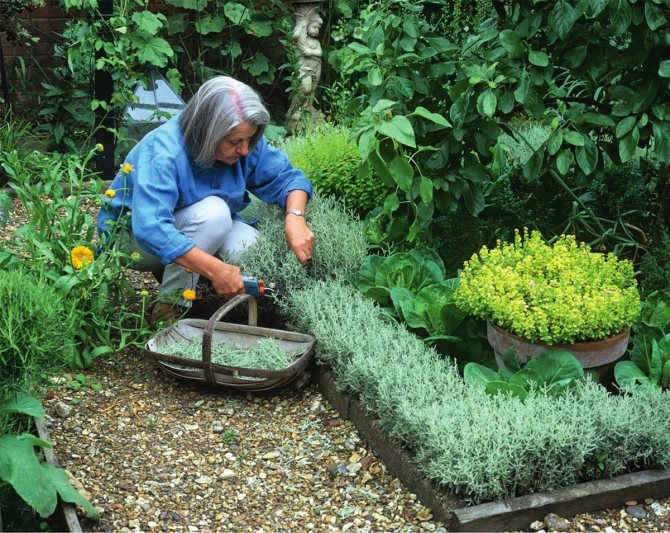

Periodic pruning helps to maintain the shape of the Santolina crown
Wintering
In the temperate zone, plants do not tolerate winters well. During this period, they can be saved in only two ways - to bring them into the room or to take care of a reliable shelter. To be kept indoors, santolina is transplanted into a pot at the beginning of autumn and kept until spring in a cool (no higher than + 18 ° C) room.
When wintering in the ground, the stems of the plant are cut by 2/3, the soil in the root zone is covered with a layer of sand or foliage, after which a frame is made, on top of which several layers of covering material are stretched. A wooden box or other ready-made structure can be used as a frame.
Santolina planting and care in the open field
Taking care of santolina in the open field is not burdensome. A well-lit site should be chosen for planting. If the sun is enough, the bush will grow lush enough and will not lose a silvery tint on the leaves.
With a lack of light, the stems will begin to stretch up too much, the smell will decrease. When growing a culture indoors, try to take it out to a balcony or garden so that the flower receives a lot of sun.
Santolina's natural habitat is rather harsh, so it will grow even in poor soils, while growing on nutrient substrates can lead to the plant not blooming.
Stony soils or sandy loam with a neutral reaction are best suited, although in general you can grow this flower on any land, as long as it is loose and there is drainage on the site. The close location of groundwater is also undesirable.
to the table of contents
Owner reviews about cultivation
I think many are familiar with this beautiful flower. The most unpretentious plant that you can plant in your garden and forget about it. In the sense that caring for him is minimal, and the breeding method is impossibly simple. Mainly in the autumn season, you tear off a twig from a santolina bush and plant it in the ground. That's all The survival rate is excellent, there is no need to cover the bush with anything for the winter - the bush will endure any bad weather heroically. And what smell it emits is invigorating, sweet and gentle. I recommend planting this flower in your summer cottage - you will not regret it.
Olga1987
Cypress Santolina is going through its fourth winter. She endured last winter perfectly without any shelter, though it did not bloom. And I lost the felt one this summer through my own fault - I looked after a new place for it and decided to transplant it in the spring, but dug it out unsuccessfully. precipitation - for example, a piece of plywood to ventilate from below.
Bagheera
//websad.rf/archdis.php?code=287700
Out of 30 seeds, I survived until planting in OG 22. Then there were about 15. My dogs broke. Over the summer, they have grown by about 20 cm. They have fluffed up. But, honestly speaking, it reminded me more of wormwood. The color was green at first, then it became bluish. But in the fall I heavily bored it and cut a whole bunch of cuttings, which I simply stuck into a common bowl and brought into an unheated room, about 70% rooted. So they still stand.
Galina kuprik
Santolina
Santolina is an evergreen shrub or subshrub of the Aster family with a height of 10 to 60 cm, native to the Mediterranean. Experts name from 5 to 24 types of santolina. In gardens, cypress santolina (Santolina chamaecyparissus) and its varieties are commonly used. Since the plant is not very winter-hardy, it is not very popular with us, but it is successfully grown with proper shelter.
Santolina cypress has a height of 30 to 60 cm, forms a dense round bush. Its leaves have a silvery color and resemble cypress needles, for which it got its name. The stems and leaves of Santolina are densely pubescent. Yellow inflorescences, similar to tansy inflorescences, densely cover the plant from mid-July to late August.The stems and leaves of Santolina have a pronounced aroma of wormwood, the flowers are fragrant to a much lesser extent.
Brief description of santolina


Depending on the variety, santolina flowers can be either deep yellow or light sandy
This Mediterranean evergreen perennial branching plant is a low shrub or subshrub with fragrant tubular flowers gathered in small globular baskets. Its leaves, similar to cypress twigs, are silvery gray. Their scent is reminiscent of wormwood. The height of the bushes is half a meter. Santolina grows best in sunny, dry places without stagnant water, and the soil prefers light, sandy or rocky with coarse sand or small pebbles for drainage.
Spring pinching gives the bush a splendor and decorative effect, this allows numerous lateral shoots to develop.
At home, in a mild climate, it is an evergreen perennial, but in the middle lane it is grown as an annual.
Openwork dissected young leaves are painted in a light green hue, and then a silvery down appears on them. Flowering under favorable conditions is observed from June to September. The spicy smell of yellow buds is not liked by many pests, especially moths. Inflorescences are located on a thin stem up to 25 cm long.
Santolina's special appeal is not in its button flowers, but in its unusual leaf shape. Their decorative effect depends on the growing conditions; in case of insufficient lighting, the shoots are strongly stretched and the bush disintegrates, acquiring an untidy appearance.
Planting Santolina
Santolina is planted at a distance depending on the variety. For example, dwarf santolina is planted at a distance of up to 10 cm. If santolina is tall, then it all depends on the purpose for which you are planting. If you want to make a border, then the distance between the bushes should be no more than 0.5 m. If you decide to create a composition of spherical bushes, then in this case the plants are planted at different distances from each other, depending on the conceived project.
After flowering, the santolina is slightly pruned, as the branches fall apart in different directions, and the santolina takes on an untidy appearance. Dwarf santolina is cut much less. In the spring, santolina is cut to 2/3 the length of the shoot. The branches grow back quickly and a beautiful plant shape can be formed.
Usually santolina is sheared so that the plant, after regrowth of the branches, turns into a spherical bush. If you are growing santolina for the curb, then you need to cut it to maintain its shape. This can harm flowering, as you can cut off not only young branches, but also the shoots on which the flower is formed. Cut off the santolina so that there are leafy branches.
If you have a cold winter, it is best to prune the santolin in early spring. Otherwise, the shoots remaining after pruning will not be able to withstand frost. If the temperature drops below -15C, the branches may freeze. In this case, the bush may die. Santolina is a fairly thermophilic plant. Withstands light frosts. It can be grown in Russia without shelter in the southern regions, in Ukraine - southern Ukraine, Crimea, Lvov, Uzhgorod, Ivano-Frankivsk regions.
In a rainy season, it must be covered, since, with excessive moisture, it is susceptible to fungal diseases. It is good for the garden to combine santolina with other perennial drought-resistant plants: rosemary and sage. These plants have a pleasant spicy scent. In the sun, the aroma of these plants is enhanced. For the garden, you can use different types of santolina. You can use large, medium-sized and miniature bushes that can be grown as a groundcover or for a low curb.
Santolina cypress 'Santa'
tall shrub up to 0.6 m, has a strong spicy scent and yellow flowers.
Pinnate Santolina is a fairly tall shrub up to 0.6 m with long leaves up to 4 cm. This Santolina blooms with white flowers.
Santolina pinnate Neapolitan is an even higher bush, reaching 0.9m.
There are dwarf varieties of santolina. For example Weston or Pretty Carol. These santolins grow up to 16 cm in height.
Santolina greenish has green leaves.
All types of santolina are almost not affected by diseases and pests, if acceptable growing conditions are observed.
{/ LikeAndRead}
Planting a plant
In order for the shrub to show itself in all its glory, a warm place, well-lit by the sun, is chosen for it. Prefers santolina soil poor in nutrients, the only thing it needs is good drainage. Therefore, this culture is simply irreplaceable for creating landscape design on a rocky area. You can buy seedlings in the fall, but then you will have to plant them in the room. The main thing is that the shrub must have healthy leaves, with a characteristic color for the variety, not damaged.
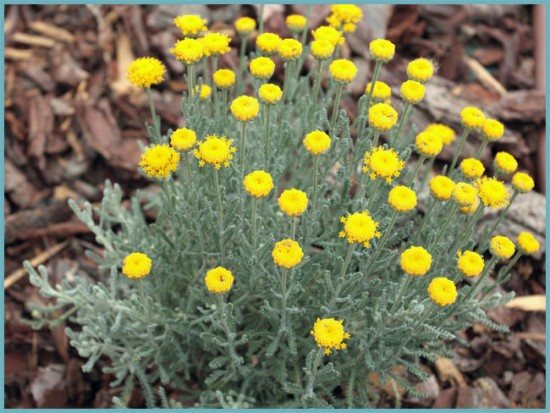

Before planting seedlings in spring soil, the soil should be dug onto a shovel bayonet, sand should be added if the soil is heavy. When several shrubs are planted, they dig a trench, remove the Mediterranean guest from the container, straighten the roots and place them at intervals of 0.1 to 0.3 m.Further, soil is poured into the trench, slightly compacted around young plants, watered abundantly until the seedlings will take root.
This is interesting: How to feed garden roses in the fall
Reproduction methods
The shrub is grown mainly by seed, dividing the bush and cuttings. The seed method is more often used by gardeners in the northern regions, growing seedlings at home.
Growing from seeds
Seedlings start growing in mid-spring. For this, gardeners purchase seedling soil and planting material in a specialized store. A drainage layer of expanded clay or small stones is laid on the bottom of pre-prepared containers. The bottom of the container should also have drainage holes. The containers are filled with soil and moistened abundantly.
Since the seeds are too small, they are laid out on the soil surface and covered with a layer of light fertile mixture 0.5 cm thick. The top layer is carefully moistened with a spray bottle so as not to wash the seeds. The containers are covered with plastic or cling film with small holes and placed in a warm and bright place. The temperature regime should be in the range from 18 to 20 ° C.
The first shoots should appear in two or three weeks. When 2-3 leaves appear, the seedlings dive. To do this, each seedling is transplanted into a separate pot with fertile soil. In the process of growing, the seedlings are hardened. With the onset of warm days, gardeners take out seedlings for a day on a loggia or a glazed balcony. Planting in open ground begins in late spring or early summer.
Method of grafting and dividing the bush
Cuttings in warm climatic zones begin in the spring, and in cold climates - in the fall. For this, blanks are cut from the shoots 10-15 cm long. The cuttings are completely cleaned, collected in a bunch and removed for the winter in the basement or cellar. In the spring they are taken out and soaked for a day in a solution of a growth stimulant.
Rooting can be done directly in the seedling soil. To do this, it is poured into pots, abundantly moistened and cuttings are planted. Then each seedling is covered with a glass jar or cut-off plastic bottle. All these activities are carried out at home, and the planting of seedlings in open ground is performed in the summer.
Reproduction of santolina
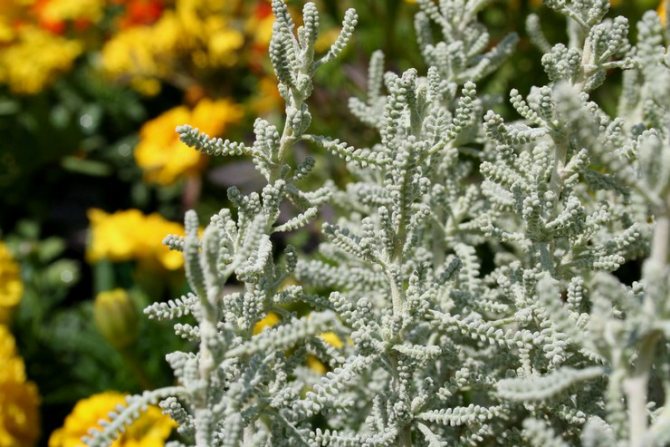

Reproduction by dividing the bush
It is recommended to divide the bush once every five or six years. Such a procedure is at the same time a way of rejuvenation, plant renewal. In early spring, an adult shrub must be removed from the ground and, using a sterile knife, cut the rhizome into several parts.Each split section should have healthy and strong shoots and strong, intact roots. Places of cuts are immediately sprinkled with charcoal or activated carbon powder, after which santolina seedlings are planted in a permanent place.
Propagation by cuttings
At the beginning of March, green cuttings of at least 5 centimeters in length are cut from the mother plant, dipped for a while in a container with a stimulant for root formation and planted in wet sand. It is recommended to cover each stalk with a glass jar or a cut plastic bottle to create the greenhouse conditions necessary for high-quality rooting. After the appearance of several leaves on the cuttings, the cover can be removed. The formation of a full-fledged root system occurs within 50-60 days. In late May or early June, cuttings can be transferred to the open ground of a flower garden or flower bed.
How to grow santolina
Lighting. Santolina prefers open, well-lit areas.
The soil. The soil should not be too fertile. Doesn't like acidic soils. Loose soils with some sand content are best. Does not grow in a wetland. Can be grown on a southern slope.
Watering. Does not need watering, does not tolerate locking.


Pruning. Pruning is needed in spring and autumn, in summer as needed. In the spring, santolina is cut to 2/3 the length of the shoot. After pruning, santolina bushes well, giving many side shoots. With the help of pruning, a beautiful bush is formed. As one seasoned gardener put it: "If the santolina is not as good as you would like, then it needs to be cut!"
Transfer. They are transplanted as needed, when the santolina grows strongly, losing its decorative effect. When transplanting, the bushes must be divided for rejuvenation. They are planted in a new place deeper so that the lignified stem is completely hidden under the soil layer.
This planting contributes to the emergence of young roots at the base of the shoots, gives rise to numerous new shoots. After transplanting, the bushes are recommended to be cut by about a third of the length of the shoots.
Wintering. It is believed that santolina belongs to the 6-9 climatic zone of frost resistance. It tolerates light frosts well. Wintering conditions for santolina are about the same as for lavender. It hibernates normally throughout Ukraine, in southern Russia, in central Russia, it can freeze out in winter. Some gardeners practice an air-dry shelter for the winter, or cover with coniferous spruce branches and sprinkle with leaves.
Unsuccessful wintering sometimes happens not because of severe frosts, but because of the alternation of frosts with thaws. Its roots get wet when water from the melted snow stands on the frozen ground in the depths.
Reproduction. The easiest way to propagate santolina is by dividing the bushes or grafting. Divide the bushes in spring or autumn. Delenki must have at least a minimum of roots. They are planted quite deep, usually buried to the point where branching begins. Some gardeners recommend sprinkling around with sand.
Everything that fell off when dividing the bush is not thrown away, but dripped into loose soil and watered. Many cuttings that seem unsuccessful at first glance take root successfully.
For grafting, shoots are taken, cutting them off at the base, with a "heel". Cuttings take root well in moist, loose soil.
If transplantation and division are planned for the spring, then in the fall the bushes are spud so that young lateral roots appear.
Conditions for successful growth of the shrub
In order for an ornamental shrub to grow well, choose a warm, well-lit place. The soil should be well-drained and the groundwater should not come close to the surface. Seedlings should not have damaged leaves.
On moist, clayey soils, it dies, on fertilized soils, it grows well, and poor soils stimulate its flowering. It is better to choose a soil dry, with good water and air permeability.
Recent Entries
Gardener's lunar calendar for 2020: we do it right 3 reasons, make a reservoir in the country: we plan a new season Note for gardeners: 7 useful things to save energy
Some types of shrub
According to the latest data, the genus includes about 20 species. Among them it is worth noting:
- Santolina green is an evergreen shrub with a pleasant aroma. It got its name from the bright green leaves. Differs in lush spherical flowers with a creamy color. The plant is perfectly adapted to urban conditions, which allows it to be grown in parks and gardens.
- Rosemary is a dense, branched, evergreen plant. Small pinnately dissected leaves grow on erect stems. Some are only 1 mm long. Santolina rosemary has rounded flowers that rise above the foliage. The shrub is used for curbs, dry stone walls and rockeries.
- Santolina cypress is a lectotype of the genus. It is a semi-shrub, reaching up to 1 m in height. The erect stems are green or grayish in color, thanks to the small, matte cannon. The leaves grow on short stalks and are up to 6 cm long. The flowers are bright yellow, tubular, and grow up to 5 mm in length.
Several other types of santolina can be noted: African, Corsica, graceful, etc.
Features of Santolina
The height of santolina varies from 0.1 to 0.6 meters. On the surface of feathery or simple (in some cases, long) leaf plates there is a light gray fluff. Thin stems rise above the foliage by 10-25 centimeters, in their upper part there are flowers collected in yellow or white dense spherical inflorescences, reaching about 20 millimeters in diameter. The inflorescences and foliage of this plant are fragrant, since it also contains essential oils. Bloom is observed from June to August. This culture, which has a high decorative effect, is grown on slopes, crushed stone beds, and also in rocky gardens.
Types and varieties of santolina
- the tallest plant of all species, reaching a height of almost 1 m, but this Santolina has dwarf varieties Weston and Pritty Carol up to 16 cm high.The plant blooms with globular yellow inflorescences, contrasting with the green dissected foliage. Most often, due to its thermophilicity, this species is grown in an alpine greenhouse.
- a plant up to 60 cm high with narrow leaves up to 4 cm long, long peduncles and creamy spherical inflorescences.
The most popular varieties of santolina are:
- Rosemary. An ornamental shrub with very fine feathery foliage, and almost every part of the flower contains an essential oil. It is this that provides the spicy scent of Santolina. In addition, the leaves of this variety are used in cooking as a condiment.
- Cypress. This variety is perhaps the most common among Russian flower growers. The shrub reaches a height of about half a meter, moreover, the shoots of the plant have an arched structure. Fragrant leaves tend to change their color throughout the summer period, and if at first they are light green, then at the very end they become silvery in color and velvety to the touch. This variety blooms with yellow flowers with a pleasant aroma, the flowering itself lasts from the first days of June to the end of August.
- Feathery. Lush and tall shrub, the leaves of this variety are very narrow and grow up to 40 millimeters in length. The inflorescences themselves are white, collected in a small basket and are located on a long thin peduncle.
- Graceful. A very beautiful and thermophilic plant is presented in the form of a miniature and evergreen bush. It cannot be left on the garden plot for the winter, so in the fall it must be transplanted into a pot and brought into a warm house.
- Greenish.A flower with beautiful bright green leaves, such a shrub blooms with small flowers, which are also formed on peduncles, reaching a length of slightly more than half a meter.
- Neapolitan. Another fairly tall variety of santolina, it has light green foliage and bright yellow inflorescences. When properly grown and cared for, santolin can grow up to one meter in height.
The genus of Santolina has about 10 species. There are few types of santolina on sale, which differ in the height of the bush, the length and color of the leaves, the structure, color and diameter of the flowers.
As a garden plant, cypress santolina is widespread, which naturally occurs in warm dry shrub thickets. The height of this santolina is about 50 cm, but there are also undersized forms of santolina. Arcuate shoots of cypress santolina are covered with dissected leaves with a strong aroma.
Young foliage is light green, old - silvery. Santolina blooms in June with bright yellow inflorescences-baskets. Single fragrant flowers, located on long peduncles. This santolina gives off a pleasant aroma thanks to the essential oils contained in the leaves. Hanging bunches of dry santolina shoots in the closet will keep moths away from your belongings.
Santolina Neapolitan in good conditions reaches 1 m in height. She has green foliage and yellow inflorescences. Greenish santolina has bright green split foliage, thanks to which it looks like a cloud of green smoke from a distance, decorated with small creamy buds.
Santolina characteristic
The flowering shrub of santolin consists of feathery leaf plates with a white pubescent surface, tall thin stems about 20 centimeters in height, fragrant spherical inflorescences of white or yellow shade about two centimeters in diameter. The flowering period continues throughout the summer season. The height of the bush is from 10 to 60 centimeters. Landscape designers use highly decorative santolina for landscaping areas, on alpine slides and rocky gardens, in flower beds and flower beds.
Varieties and varieties
Several varieties of santolina are suitable for garden cultivation, each variety has its own characteristics in cultivation and care. And also each species is different not only in colors, but even in the structure of the bush and the color of the foliage.
The most popular varieties of santolina are:
- Rosemary. An ornamental shrub with very fine feathery foliage, and almost every part of the flower contains an essential oil. It is this that provides the spicy scent of Santolina. In addition, the leaves of this variety are used in cooking as a condiment.
- Cypress. This variety is perhaps the most common among Russian flower growers. The shrub reaches a height of about half a meter, moreover, the shoots of the plant have an arched structure. Fragrant leaves tend to change their color throughout the summer period, and if at first they are light green, then at the very end they become silvery in color and velvety to the touch. This variety blooms with yellow flowers with a pleasant aroma, the flowering itself lasts from the first days of June to the end of August.
- Feathery. Lush and tall shrub, the leaves of this variety are very narrow and grow up to 40 millimeters in length. The inflorescences themselves are white, collected in a small basket and are located on a long thin peduncle.
- Graceful. A very beautiful and thermophilic plant is presented in the form of a miniature and evergreen bush. It cannot be left on the garden plot for the winter, so in the fall it must be transplanted into a pot and brought into a warm house.
- Greenish. A flower with beautiful bright green leaves, such a shrub blooms with small flowers, which are also formed on peduncles, reaching a length of slightly more than half a meter.
- Neapolitan.Another fairly tall variety of santolina, it has light green foliage and bright yellow inflorescences. When properly grown and cared for, santolin can grow up to one meter in height.
Fertilizing and feeding santolina
At home, santolina grows on poor rocky soils, but it should still be fed, however, with great care. A solution of complex fertilizer is applied once a month, starting in spring, until August itself. At the same time, if you want perennials to bloom well, reduce the amount of nitrogen in the top dressing to a minimum, since its excess will promote the growth of the shrub, there will be no flowers, and as a result, the plant may die.
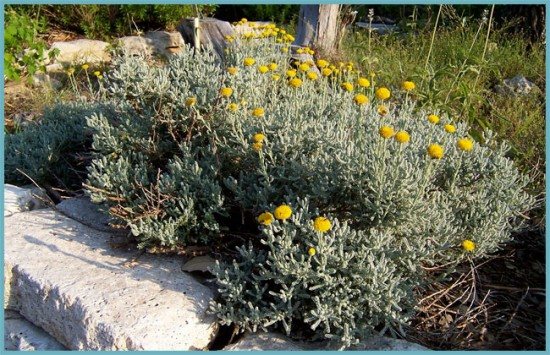

The use of santolina
For santolina, you can always find a place in the garden, even in a flower garden, even in a garden bed. It can be planted in the company of spicy plants. Santolina will look more than natural with sage, lofant, hyssop, lemon balm, catnip, basil.
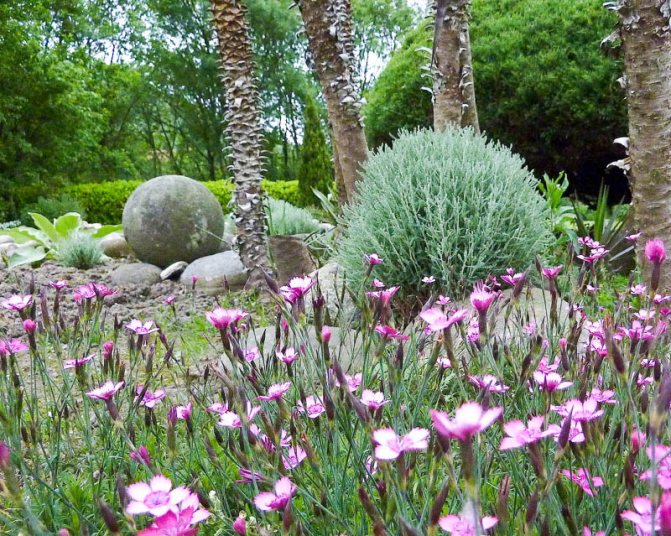

Santolina has also proven itself well on a sunny alpine hill, where the carnation herbaceous, Byzantine chisel, felted wool, edelweiss, sedum, veronica, undersized bells and other drought-resistant plants will become excellent neighbors for it.
Dwarf santolina varieties can be planted in curbs or low hedges.
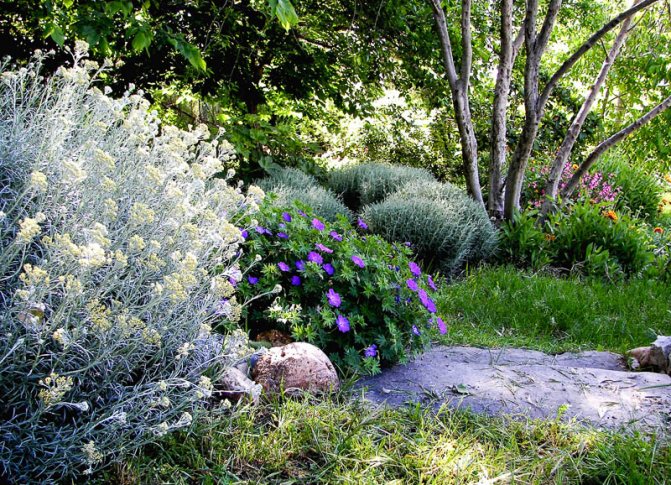

Santolina will look great in a monochromatic yellow-flowering flower garden. With its help, you can also make up contrasting flower beds. It just looks gorgeous with lavender, bells, asters, salvia, geranium.
We plant santolina
If you are planting plants in the spring, then you need to take care of the quality of the soil in advance. The earth is dug up (depth - at least thirty centimeters), after which a ditch must be made in it. The soil, which has a heavy structure, is subjected to additional processing. Sand is added to it so that rain and melt water does not linger in the ground. Only then will a strong and healthy santolina grow on your site. Planting seedlings is carried out according to the following scheme:
- The plant is carefully removed from the pot.
- The matted roots are carefully and carefully straightened.
- Seedlings are placed in a prepared ditch, keeping a distance of 20-30 centimeters between plants.
- The moat is covered with earth. The soil around the seedlings is pressed a little.
- At first, the soil is watered abundantly, but the plants are not flooded. The amount of water decreases only when the shrubs take root.
Don't forget about pruning
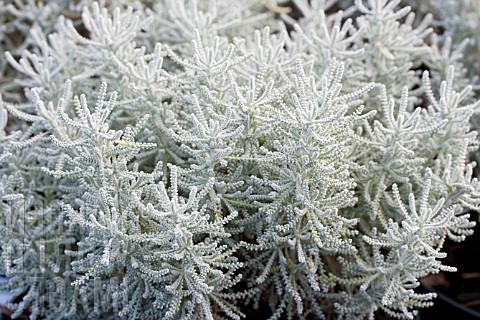

At the end of the flowering period, the santolin must be cut off. In order for the bushiness to increase, it is necessary to prune one third of the plant's height.
If you do not carry out this procedure, then the bushes will grow in width. Then a spherical plant will appear on your site, having at least a meter in diameter.
Often, gardeners approach pruning with imagination and form hedges from santolina. There is probably no plant more graceful than silvery santolina. The photo above illustrates this perfectly.
Useful properties of santolina
As mentioned earlier, santolina has a spicy scent, which makes it a perennial spicy crop. For growing santolina as a spicy crop, it is better to use species such as green santolina (S. virens) or rosemary santolina (S. rosmarinifolia). The green leaves and soft young shoots of Santolina can be added to food as a spice as it aids digestion. Dried leaves and inflorescences of santolina can be put in small sachets, and used to repel moths, or to perfume clothes in the closet. Fresh santolina juice is also known to relieve itching and irritation caused by mosquito bites.


Conditions for growing santolina
| Factor | Conditions |
| Location | You should choose a well-lit one, otherwise the stems will stretch out, and the smell will practically disappear.When cultivated as an indoor plant, it is necessary to store the flower on the balcony or in the garden in order for the santolina to receive enough sun. It is important that the landing site is away from groundwater. |
| The soil | The habitat of the shrub in natural conditions is very harsh, therefore, santolina will demonstrate good growth rates on scarce soils, and on nutritious soils, on the contrary, it may not even bloom. The most suitable soil is pH neutral, sandy loam or rocky. |
| Drainage | Should be available, expanded clay, crushed stone or broken brick is suitable as a drainage material. |
| Watering | It is carried out as the soil dries. A short-term lack of moisture is not capable of causing significant damage to the plant, which cannot be asserted with excessive watering, which can provoke rotting of the root and yellowing of the greenery and stem. |
| Top dressing | It is produced three times during the entire summer period with mineral fertilizers with a minimum concentration of nitrogen. To stimulate flowering, it is allowed to fertilize twice in 1 month. Over-feeding can harm the growth and flowering of santolina. |
| Pruning | At the end of flowering, it is worth removing 2/3 of the shoot length. Such measures help keep the bush from decay, which happens due to increased overgrowth. The inflorescences are pruned at the first sign of wilting. A mature plant (3 years and older) can be rejuvenated by removing the woody stems. It is allowed to cut the bush regardless of the season. |
Wintering santolina
The winter hardiness of santolina is insufficient to cope with the frosts of the middle lane, therefore, for this period, the bush should be temporarily placed in the house or made for him a shelter.
In the first case, the plant is removed from the soil in October, placed in a pot and stored as an indoor plant until the spring thaw. In this case, the temperature in the room should not be higher than +18 ° С.
In the second case, the soil around the shrub is sprinkled with a layer of mulch (needles, wood ash and river sand are suitable). Then the santolina must be covered with a container or box made of wood, and on top lay polyethylene, roofing material. To prevent the structure from falling apart from the wind, it is recommended to press it down with a load. In March, the shelter should be dismantled and the area should be fertilized with compost.
What seedlings to buy
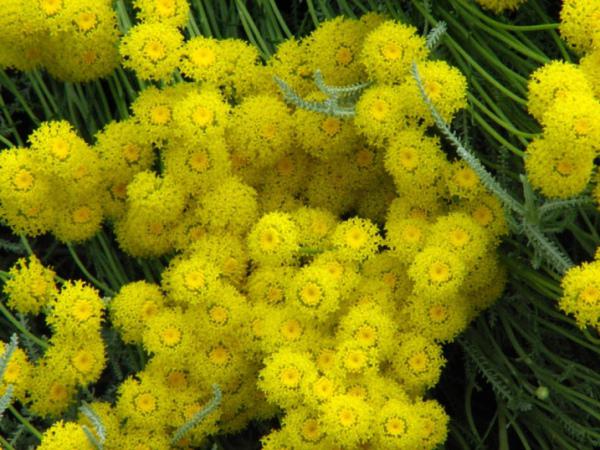

Usually, shrub seedlings are bought at the very beginning of autumn or early spring. Pay particular attention to how the purchased santolina silvery looks. Planting and caring for the plant will not give you any trouble if it has dense, strong leaves that have not changed color and have no noticeable damage. In addition, it is not recommended to purchase seedlings with yellowed leaves or if their root system is bare.
Diseases, pests and control of them
The culture is resistant to diseases and pests and does not cause much concern with proper care. A spider mite appears on a plant only with prolonged drought. When the water stagnates in the ground, root rot begins, and the lack of lighting reduces the decorative effect of the shrub.
The appearance of harmful insects is indicated by the following symptoms: the leaves turn yellow and dry. In this case, spraying with onion peel infusion or garlic with the addition of laundry soap is carried out. With a large number of pests, insecticides must be used. Excessive moisture and lack of potassium and phosphorus can cause anthracnose.
Brown spots on the leaves and shoots will tell about the disease. The plant withers. The infected parts are removed, and the sections are treated with copper sulfate. From all this, it becomes clear that diseases develop on a weakened plant and provoke them with the following reasons:
- Excess watering.
- Lack of moisture.
- Location in the shade.
Choosing the right site


Basically, santolina is a worry-free plant. However, it will bloom profusely only in places well-lit by the sun.This is another difference of the considered species. Some of the varieties of this plant are very capricious and demanding.
Special attention should be paid to the amount of moisture on the site. It is necessary that rainwater does not stagnate at the landing site. The soil itself must be dry and have a waterproof structure. This shrub also feels great on poor soils with good drainage.
Preparing for winter in advance


Santolina silvery is a southern plant. Therefore, she is very sensitive to our cold weather. In those areas where the climate is especially harsh, the shrub can even partially or completely freeze out.
Not always a person can dig up a plant and transfer it to the house for the winter. In this case, he needs to take care in advance that the bush will wait out the frosts on the street, but in a warm shelter.
The covering material can be different. For this purpose, spruce branches, fallen leaves, and so on are suitable. The santolina bush must be covered completely. In addition, the soil around it also takes cover. Thus, the possibility of freezing of plant roots is excluded.
Views
The number of popular santolina species widespread in horticulture is about 80. Of these, the most popular are.
Cypress
In open soil, it grows to a small size, rounded shrub, with a height up to 50 cm.
Shoots have pleasant olive aroma and covered with fully dissected leaves. During the season, the leaves change their color to silver.
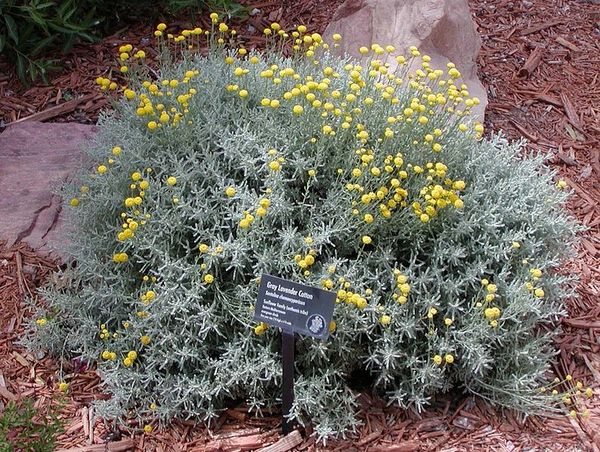

Cypress
Neapolitan
Tallest a plant of all species. Under natural conditions it reaches up to 1 meter upward.
This variety is rich in bright yellow fragrant inflorescences.


Neapolitan
Greening
Hardy and unpretentious look, which can withstand temperatures down to 7 degrees.
The shrub is rounded, resembles a haze from a distance. The deciduous part is green, pinnately dissected.
Attracts butterflies, insects creamy inflorescencesthat delight the eye throughout the summer. The leaves and shoots of the plant are used in the industrial part to obtain seasonings.
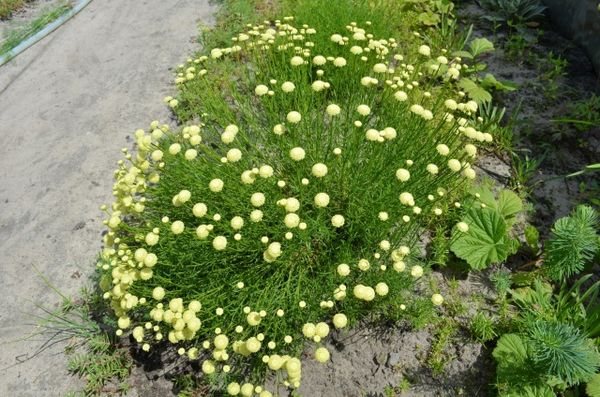

Greening
Rosemary
A flower with fine pinnately dissected foliage. All parts of the plant contain essential oilswhich give Santolina a spicy olive aroma.
This variety is grown by amateur gardeners as a spicy crop.
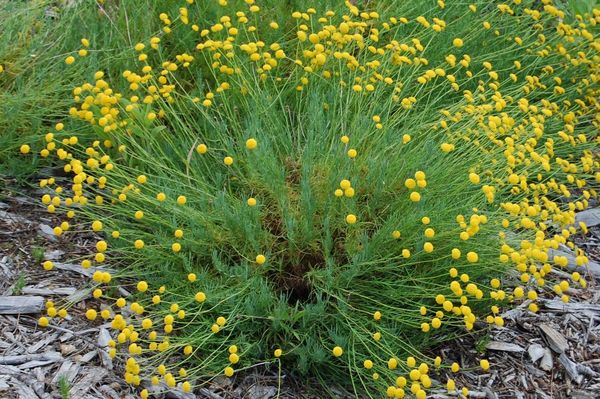

Rosemary
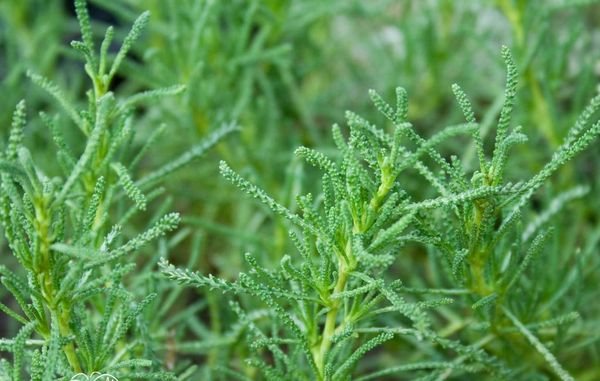

Outwardly, this variety is very similar to rosemary.
Graceful
A cute, compact shrub, of short stature, thrives in a warm climatic zone and is intended as an ornamental plant for greenhouse areas.
In open garden areas does not tolerate winter frosts... The plant blooms with yellow flowers.
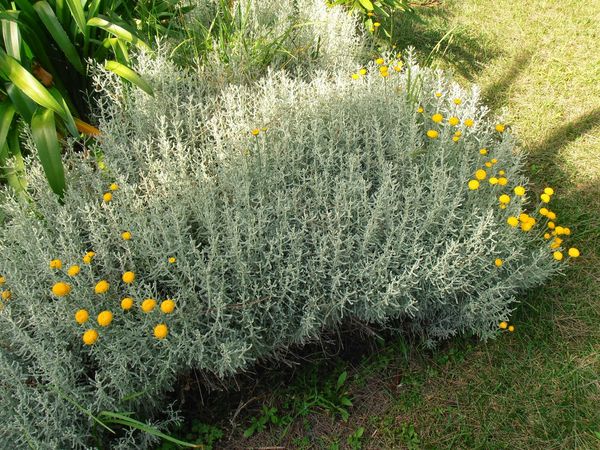

Graceful
Santa
Fragrant variety Santa forms beautiful round strongly branching bushes 25-40 cm tall.


Santa
Photos of popular varieties and species
In nature, there are about 24 different types of Santolina, but 5 of them are popular with flower growers:
- Santolina is cypress. Lush spherical bush 50-60 centimeters high with arched shoots. The foliage is green with a gray or silvery tinge covering the leaves as the plant grows. The flowers are yellow with a pleasant aroma.
- Santolina is pinnate. The height of the plant is about 60 centimeters, the diameter of the bush is about 50 centimeters. The leaves are narrow. Flowers are basket-shaped, white.
- Santolina is greenish. Bright green leaves, small creamy flowers.
- Santolina Neapolitan. Bush up to 1 meter high. There are also dwarf varieties with a height of 16-20 centimeters (Pretty Carol and Weston). Dwarf varieties are suitable for indoor cultivation. Leaves are light green, flowers are yellow.
- Santolina Graceful. Not resistant to frost. A low spherical bush with yellow flowers and bluish foliage.
Santolina: Combination with other plants
Most suitable company for santolina:
- catnip;
- english lavender;
- sage;
- mint;
- chamomile.


As a result of combining her own scent with the scent of these spicy plants, an overall harmonious and beautiful scent is created. It also looks great in combination with annual plants, as well as next to felicia, pelargonium, heliotrope.
Plant santolina in your garden. All summer you will inhale its wonderful aroma, and in autumn a beautiful spicy dry bouquet from it will carry the smell of summer into the house.
Santolina: photos
Santolina in medicine
At first, it was more of a medicinal plant than a decoration, but nowadays it is rarely used as a medicinal herb. Santolin was used in medicine more than a century ago, but now they prefer to use other, stronger herbs.
- Santolina did not have a large amount of vitamins and macro or microelements in it, but it helped to treat joints for many people.
It was actively used by travelers, because if you are far from the nearest hospital, and your joint begins to hurt, this plant will help, because it has an almost instant, but short-term analgesic effect.
- From the flowers of santolina, a tonic tea is prepared, which helps at the level of coffee, but less harmful, and given that it blooms all the time, you can drink it on a regular basis.
- In order to get rid of the pangs of your joints, it is recommended to chop up young shoots of a bush and bandage the joint, putting chopped shoots on it. In just five to seven minutes, the juice will be absorbed and relieve the pain in the joint, but it will return fairly quickly. This is only a symptom mitigating option.
Bush flowers are suitable for brewing tea, a couple of which need to be thrown into boiled hot water, wait literally two minutes and you can drink. The effect of it is gradual, but you are guaranteed to get a boost of vivacity!
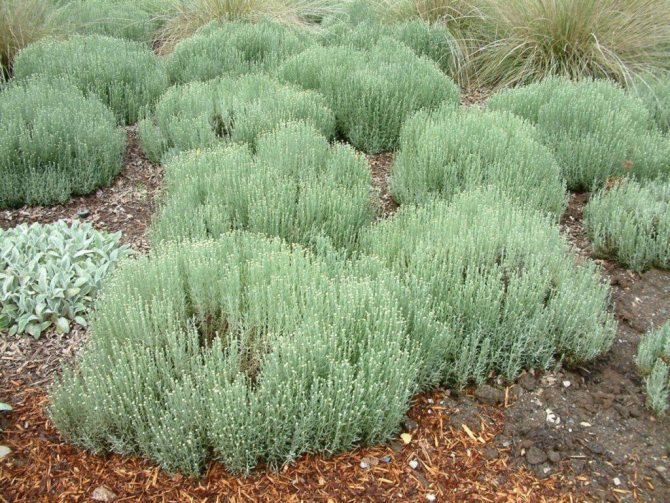

Santolina contraindications
- Do not forget that flowers contain pollen, a strong allergen.
- Drinking tea or applying a bandage is strictly prohibited for allergy sufferers.
- It is recommended to be more careful for people with diabetes.
- There is no harm to santolina, as well as little benefit from it.
Conclusion
Santolina, although it is a medicinal herb, but now it is more likely used by people as an ornamental plant than medicinal. In medicine, it has found application in few places, but it is widely used as a decorative one.


